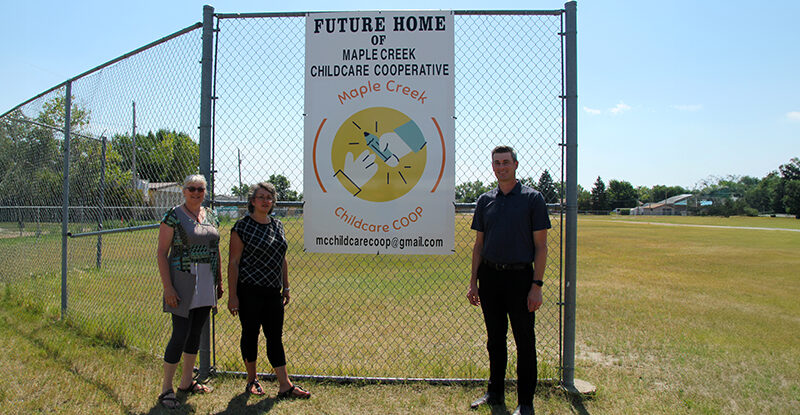How municipal leaders can solve local child care shortages

Sponsored by
In Maple Creek, Sask., local businesses and institutions were struggling to find and retain employees. The reason? The community and surrounding region lacked enough child care spaces to allow parents to go back to work. It was a problem that the Town and Rural Municipality of Maple Creek and Nekaneet First Nation shared. All three recognized the impact it had on the local economy. But the region had a few things in spades:
- smart municipal leaders
- economic development professionals who were open to innovative solutions
- dedicated community members willing to pitch in
Leaders from the region decided to take on the issue together by forming a child care co-operative.
The Maple Creek Childcare Cooperative accessed available government funding for child care projects. It was approved to build a new 42-space child care facility. Then, given the demand, the government asked them to expand it to 60 spaces. Construction is currently underway.
What a Co-op Does
Co-ops are businesses created and owned by the people or entities who use them – who agree to make decisions about the business together and share the benefits. This makes a co-op the perfect tool for creating child care spaces.
Child care co-ops aren’t looking to make a profit – only to provide a local service that people need. They are run on a not-for-profit basis.
While many co-ops are started and owned by individual members, some – like in Maple Creek – are owned by other businesses or institutions. Institutions like municipalities tend to have more capacity than individuals, especially parents of young children who need the service. But even if they’re not starting the co-op themselves, parents and individual leaders can still be involved. They can serve on the board and work alongside local government to move the project forward.
Addressing Child Care Deserts
According to a 2023 Canadian Centre for Policy Alternatives report, 48 per cent of young children across the country live in child care deserts. The discrepancy between provinces is stark.
In Prince Edward Island, only four per cent of young children live in areas where there aren’t enough child care spaces. Saskatchewan leads the country with 92 per cent of young children living in areas with inadequate spaces. In Manitoba, that number is 76 per cent, followed by 64 per cent in British Columbia and 61 per cent in Alberta. That’s a lot of lost potential for families and economies.
While they provide funding to create new spaces, it’s not up to the federal or provincial governments to build them. It’s at the community level where spaces need to be created.
To build more spaces, municipalities, First Nations, and other partners can use the co-op model to take matters into their own hands. They can share the responsibility of creating a solution that suits the needs of their unique population.
It has never been a better time for community leaders to come together and create child care spaces that will benefit their local economy for years to come. MW
✯ Municipal World Executive and Essentials Plus Members: You might also be interested in Monica Randell’s article: Community health nurse initiative tackles health care system strain.
Aasa Marshall is the director of communications at Co-operatives First.
Related resource materials:



